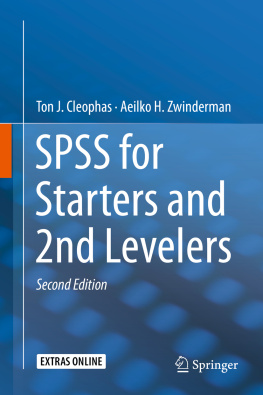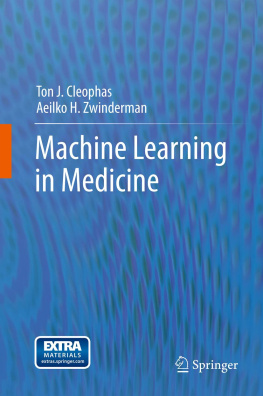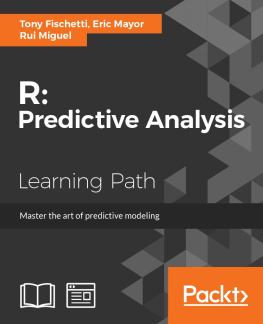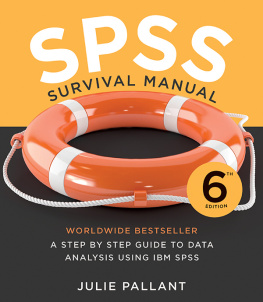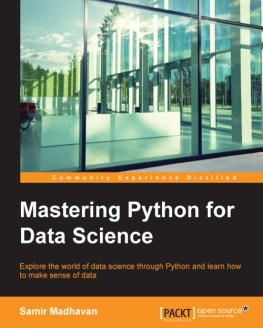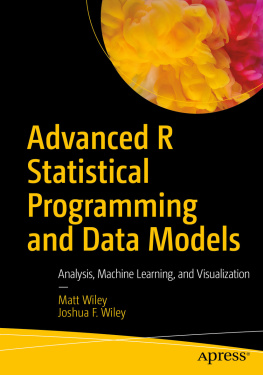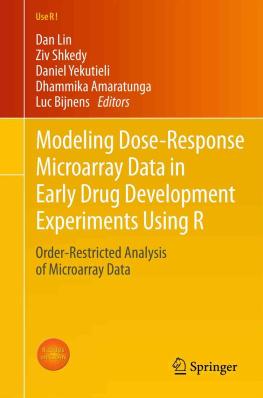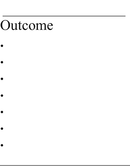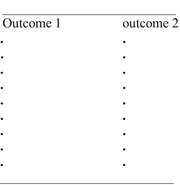We offer to read an annotation, description, summary or preface (depends on what the author of the book "SPSS for Starters and 2nd Levelers" wrote himself). If you haven't found the necessary information about the book — write in the comments, we will try to find it.
Preface.- Introduction -- I Continuous outcome data -- One sample continuous data -- Paired continuous outcome data normality assumed -- Paired continuous outcome data nonnormality accounted -- Paired continuous outcome data with predictors -- Unpaired continuous outcome data normality assumed -- Unpaired continuous outcome data nonnormality accounted -- Linear regression for continuous outcome data -- Recoding for categorical predictor data -- Repeated-measures-analysis of variance normality assumed.- Repeated-measures-analysis of variance nonnormality accounted -- Doubly-repeated-measures-analysis of variance -- Multilevel modeling with mixed linear models. Random multilevel modeling with generalized mixed linear models -- One-way-analysis of variance normality assumed -- One-way-analysis of variance nonnormality accounted -- Trend tests of continuous outcome data -- Multistage regression -- Multivariate analysis with path statistics -- Multivariate analysis of variance.- Average-rank-testing for multiple outcome variables and categorical predictors -- Missing data imputation -- Meta-regression -- Poisson regression including a weight variable (time of observation) for rates -- Confounding -- Interaction -- Curvilinear analysis -- Loess and spline modeling for nonlinear data, where curvilinear models lack fit -- Monte Carlo analysis, the easy alternative for continuous outcome data -- Artificial intelligence as a distribution free alternative for nonlinear data -- Robust tests for d ata with large outliers -- Nonnegative outcome data using the gamma distribution -- Nonnegative outcome data with a big spike at zero using the Tweedie distribution -- Polynomial analysis for continuous outcome data with a sinusoidal pattern -- Validating quantitative diagnostic tests -- Reliability assessment of quantitative diagnostic tests -- II Binary outcome data -- One sample binary data -- Unpaired binary data -- Binary logistic regression with a binary predictor -- Binary logistic regression with categorical predictors -- Binary logistic regression with a continuous predictor -- Trend tests of binary data -- Paired binary outcome data without predictors -- Paired binary outcome data with predictors -- Repeated measures binary data -- Multinomial logistic regression for outcome categories -- Multinomial logistic regression with random intercepts for both categorical outcome and predictor data -- Comparing the performance of diagnostic tests -- Poisson regression for binary outcome data -- Loglinear models for the exploration of multidimensional contingency tables -- Probit regression for binary outcome data reported as response rates -- Monte Carlo analysis, the easy alternative for binary outcomes -- Validating qualitative diagnostic tests -- Reliability assessment of qualitative diagnostic tests. III Survival and longitudinal data -- Log rank tests -- Cox regression -- Cox regression with time-dependent variables -- Segmented Cox regression -- Assessing seasonality -- Probability assessment of survival with interval censored data analysis -- Index.;For medical and health workers this book is a must-have, because statistical methods in these fields are vital, and no equivalent work is available. For medical and health students this is equally true. A unique point is its low threshold, textually simple and at the same time full of self-assessment opportunities. Other unique points are the succinctness of the chapters with 3 to 6 pages, the presence of entire-commands-texts of the statistical methodologies reviewed, and the fact that dull scientific texts imposing an unnecessary burden on busy and jaded professionals have been left out. For readers requesting more background, theoretical and mathematical information a note section with references is in each chapter. The first edition in 2010 was the first publication of a complete overview of SPSS methodologies for medical and health statistics. Well over 100,000 copies of various chapters were sold within the first year of publication. Reasons for a rewrite were four. First, many important comments from readers urged for a rewrite. Second, SPSS has produced many updates and upgrades, with relevant novel and improved methodologies. Third, the authors felt that the chapter texts needed some improvements for better readability: chapters have now been classified according the outcome data helpful for choosing your analysis rapidly, a schematic overview of data, and explanatory graphs have been added. Fourth, current data are increasingly complex and many important methods for analysis were missing in the first edition. For that latter purpose some more advanced methods seemed unavoidable, like hierarchical loglinear methods, gamma and Tweedie regressions, and random intercept analyses. In order for the contents of the book to remain covered by the title, the authors renamed the book: SPSS for Starters and 2nd Levelers. Special care was, nonetheless, taken to keep things as simple as possible. Medical and health professionals tend to dislike software syntax. Therefore, virtually no syntax, but, rather, simple menu commands are given. The arithmetic is still of a no-more-than high-school level. Step-by-step analyses of different statistical methodologies are given with the help of 60 SPSS data files available through the internet. Because of the lack of time of this busy group of people, the authors have given every effort to produce a text as succinct as possible.

